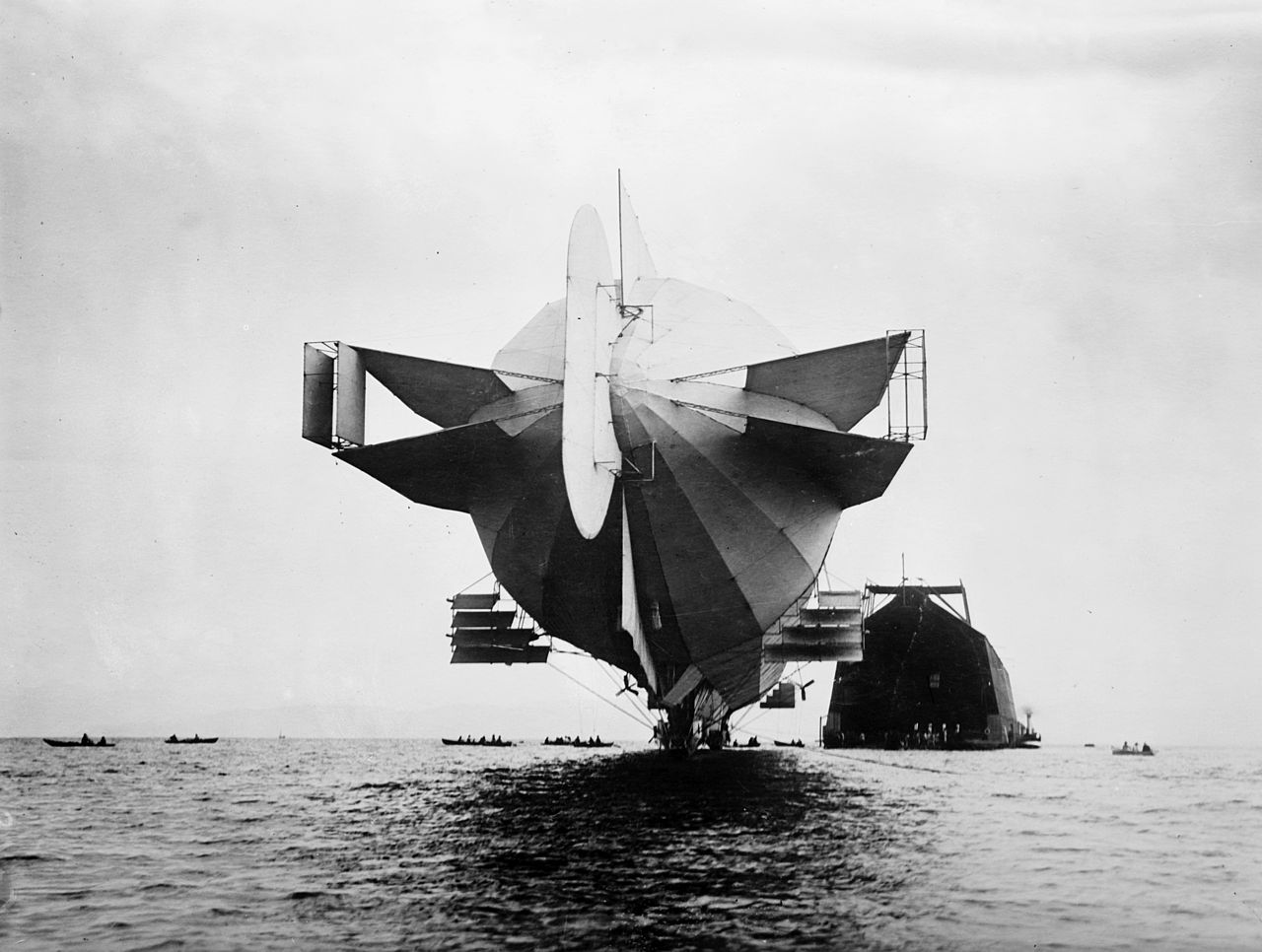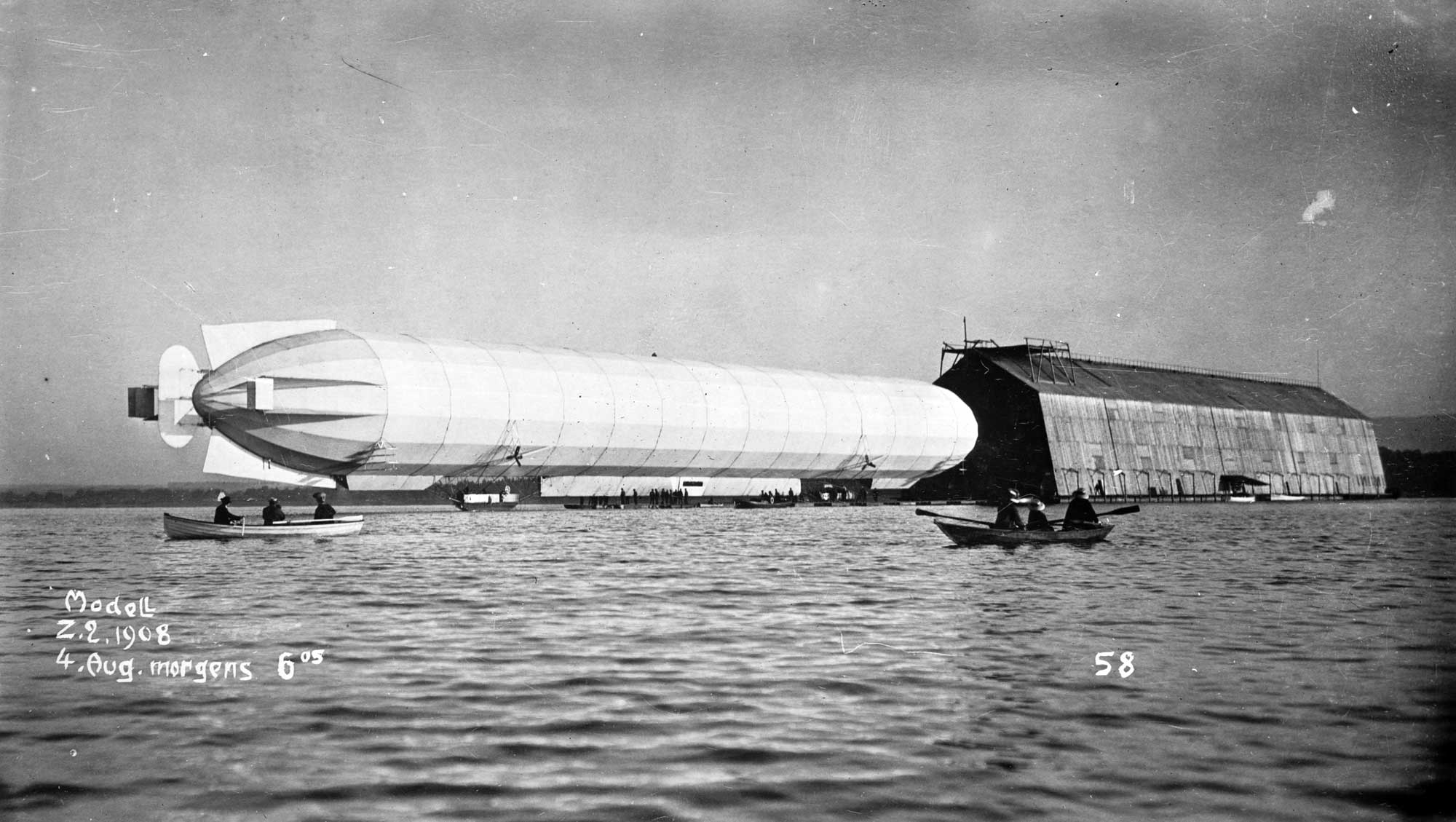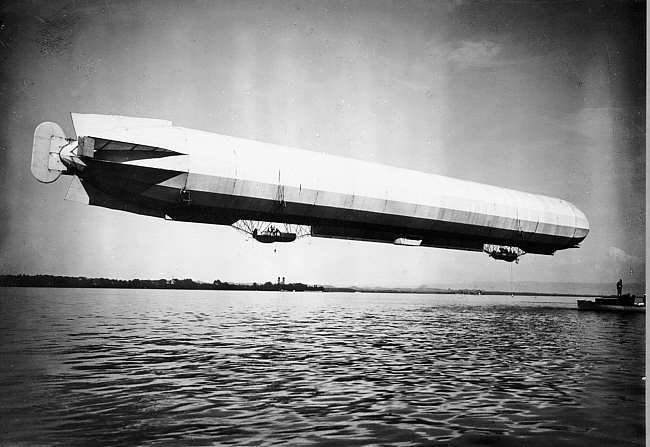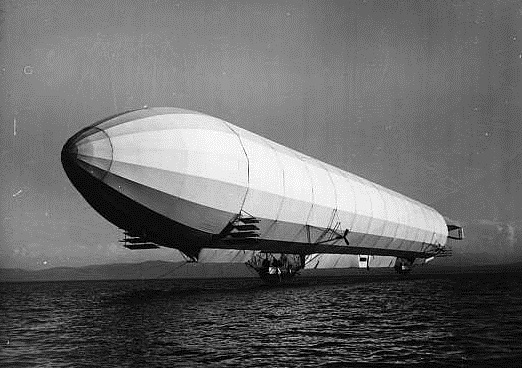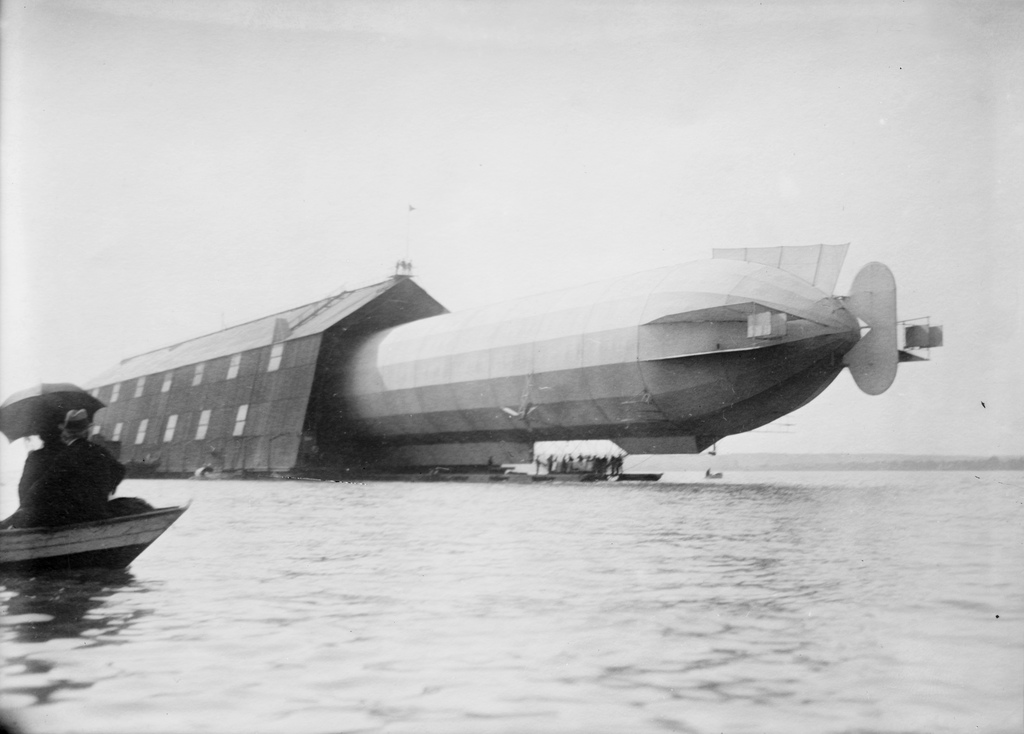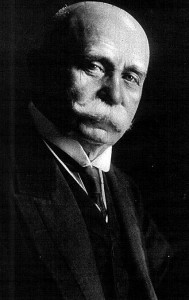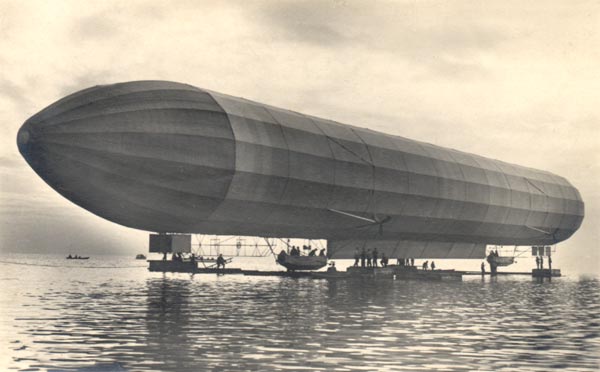
17 January 1906: Ferdinand Adolf Heinrich August Graf von Zeppelin’s second airship, Luftschiff Zeppelin 2, designed by Ludwig Dürr, made its first—and only—flight, at Lake Constance (Bodensee), a large lake at the base of Alps.
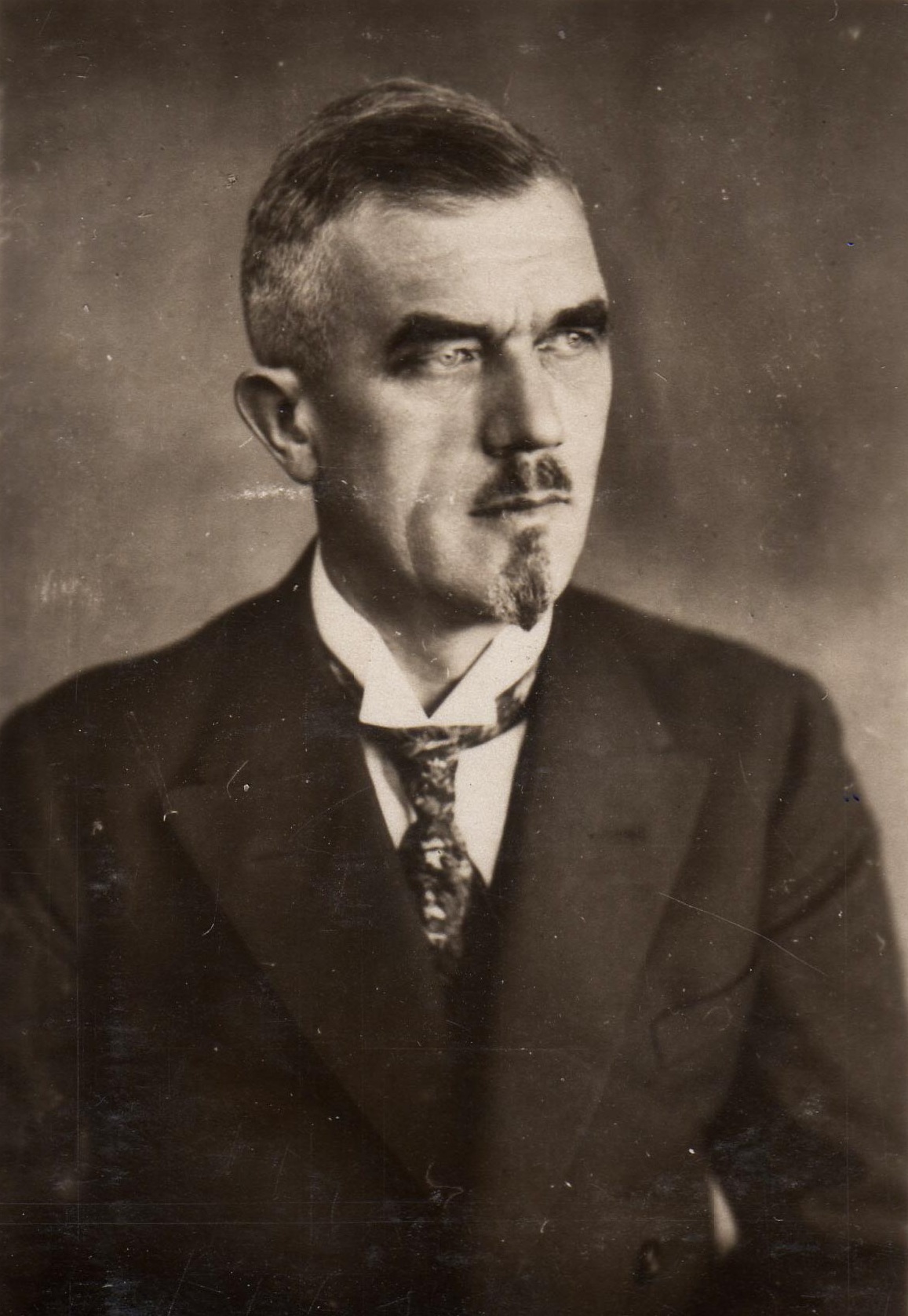
LZ 2 was 127 meters (416 feet, 8 inches) long and 11.70 meters (38 feet, 5 inches) in diameter. It had a volume of 10,400 cubic meters (367,273 cubic feet). The rigid structure was built of triangular-section girders that combined light weight and strength. Hydrogen gas contained in bags inside the airship’s envelope gave it buoyancy.
Ladislas d’Orcy described the airship:
. . . Hull-frame of aluminum-alloy lattice girders, cross-braced by wire stays, and subdivided into compartments for independent gas-cells. No ballonets. Fabric skin. Trim controlled by lifting planes. Cars rigidly connected. Gangway affording passage between the cars.
—D’Orcy’s Airship Manual, by Ladislas d’Orcy, M.S.A.E., The Century Company, New York, 1917, at Page 127
The airship was powered by two 85 horsepower Daimler-Motoren-Gesellchaft gasoline-fueled engines designed by Karl Maybach. They turned four three-bladed propellers at 820 r.p.m. It was capable of reaching 40 kilometers per hour (25 miles per hour). The airship’s ceiling was 2,800 feet (853 meters).
L’AÉROPHILE reported:
Une nouvelle sortie—la derniére—eut lieu le jeudi 18 janvier 1906. Parti de son garage et parvenu à 500 mètres environ, le ballon était désemparé, et après avoir passé au-dessus de Raverasburg, Kisslegg et Sommerstadt, venait s’abattre en territoire suisse, à Allgaen. Certains correspondants assurent qu’il était monte par l’inventeur, , des officiers allemands et des hommes d’équipage qui n’eurent pas de mal. Mais, dans la chute, das avaries irréparables se produisirent si bien que le comte Zeppelin, decouragé, ne continuera pas ses essais. ¹
—L’AÉROPHILE, 14º Année, Noº 1, Janvier 1906, at Page 32
THE CINCINNATI ENQUIRER reported:
AERONAUT’S ILL LUCK.
CABLE TO THE ENQUIRER AND N. Y. HERALD.
(Copyright, 1906, by N. Y. Herald Company.)
Berlin, January 18.—Count Zeppelin made a second trial to-day with hi snew airship. Starting from Lake Constance, the airship passed over Ravensberg, Kisslegg and Sommersledat and landed at Allgaen. It was seriously damaged in the storm, and further trials will be impossible at present.
—THE CINCINNATI ENQUIRER, Vo. LXIII, No. 10, Friday, 19 January 1906, Page 2. Column 1
An engine failure forced the ship to make an emergency landing close to a small town named Sommersried, Allgäu, in southern Germany, and was so badly damaged by a storm during the night that it had to be scrapped.
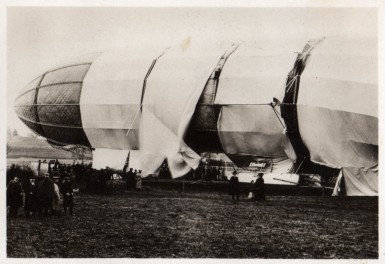
¹ Google Translation: “A new exit-the last-took place on Thursday, January 18, 1906. From his garage and reached about 500 meters, the balloon was clueless/distraught, and after passing over Raverasburg, Kisslegg and Sommerstadt, came crashing down in Swiss territory, in Allgaen. Some correspondents assert that he was mounted by the inventor, German officers and crewmen who were not hurt. But in the fall, irreparable damage occurred so that Count Zeppelin, discouraged, did not continue his attempts.”
© 2019, Bryan R. Swopes
